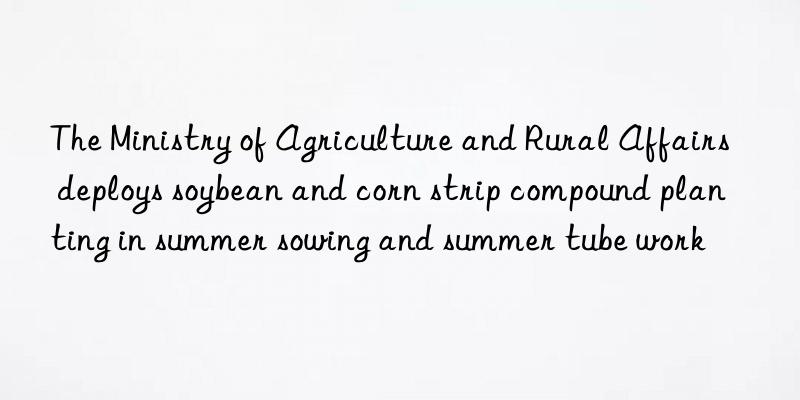
According to the news from the website of the Ministry of Agriculture and Rural Affairs, "After the mangoes are planted, they are busy planting beans". At present, it is a critical period for soybean and corn belt compound planting in summer sowing and summer tube. Recently, the Ministry of Agriculture and Rural Affairs held the National Soybean and Corn Ribbon Compound Planting Site Observation and Exchange Meeting in Suzhou City, Anhui Province, to observe the variety of agricultural machinery display and summer sowing site, to carry out key technical training, to exchange experiences and practices in various places, and to deploy key tasks of summer sowing and summer management. Push the strip compound planting to go deeper and finer.
The meeting pointed out that promoting the demonstration and promotion of strip compound planting is a realistic choice to break resource constraints, promote the coordinated development of soybean and corn, and increase soybean production capacity. All localities must raise awareness and deeply understand the importance of demonstrating and promoting soybean and corn strip compound planting To be more specific, strengthen confidence, strengthen measures, do everything possible to implement the summer sowing area, go all out to do a good job in summer field management, and ensure that tangible results are achieved.
The meeting emphasized that all localities should focus on key issues, grasp the key links, break the bottleneck of constraints, and unswervingly adhere to the goal of "basically not reducing corn production and increasing the harvest of a season of beans", grasping the key link of planting and preserving seedlings, and doing a good job of closing The key measure of weeding lays the foundation for a good harvest throughout the year. First, the implementation of the area must be in place. The belt-like compound planting area of summer sowing accounts for nearly 60% of the whole year. Second, the implementation of policies must be in place. Timely and full allocation of central and local supporting subsidies, strengthen fund management, and ensure the effectiveness of policies. The third is to guide the service in place. Focus on key elements and key links, carry out tour guidance, on-site guidance, and technical training in a timely manner to increase the availability and coverage of key technologies. Fourth, field management should be in place. Focus on key technologies such as variety selection, model selection, agricultural machinery matching, fertilization and chemical control, strengthen field management, optimize models, and comprehensively improve the level of standardized and standardized planting. Fifth, disaster prevention and mitigation must be in place. For natural disasters such as waterlogging and drought that may occur this year, it is necessary to make a plan, prepare in advance, prevent problems before they happen, and avoid or reduce disaster losses. Sixth, demonstration and guidance must be in place. Create a high-standard and high-quality demonstration model, set up a signboard for the belt-shaped composite planting demonstration area, play a leading role in demonstration, and do it for farmers to see and lead farmers to do it. Seventh, publicity and guidance must be in place. Summarize the good experience, good practices, and good results in the demonstration and promotion, actively promote and guide, and create a good atmosphere.
The meeting invited experts to give lectures and explain key technologies, some provinces, key counties and representatives of large planters made exchanges and speeches, heads of relevant departments in 17 pilot provinces, representatives of some key counties and large planters attended the meeting.



 微信扫一扫打赏
微信扫一扫打赏
